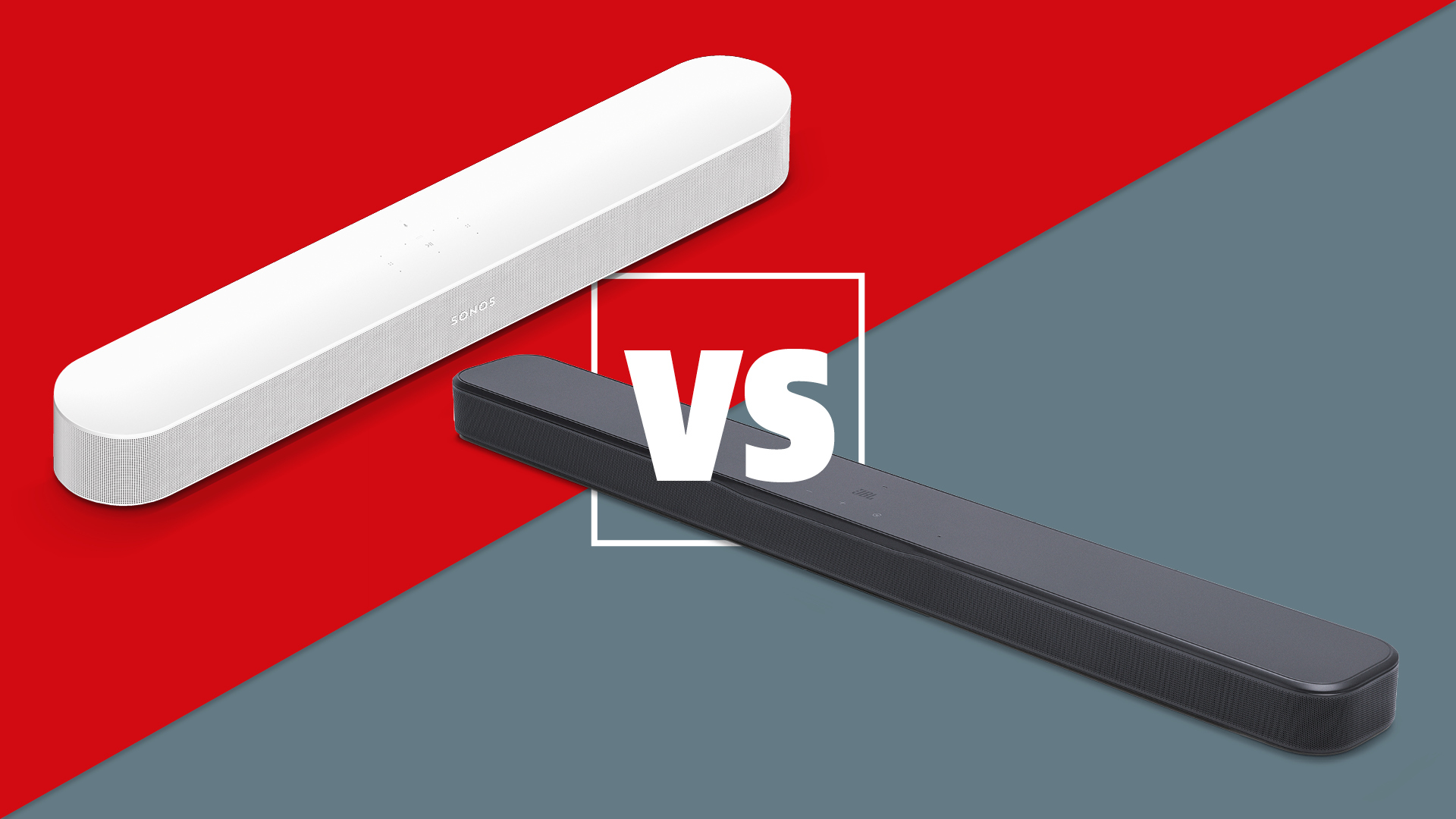Bowers & Wilkins Pi8 vs Pi6: which B&W wireless earbuds should you choose?
The key differences between B&W's latest in-ears

Bluetooth: 5.4
Codec support: AAC, SBC, aptX, aptX Adaptive, aptX Lossless
Noise cancelling: Yes
Battery Life: 6.5 hours on buds, 20 hours with case (ANC on)
Finishes: x 4 (anthracite black, dove white, midnight blue, jade green)
Weight: 7g per bud
The B&W Pi8 are some of the best wireless earbuds you can buy. They are prohibitively expensive for many, but if you have the cash, they will reward you with their supremely clear, detailed and refined sound.
Pros
- Sensational levels of detail
- Natural, refined sound
- Easy to use
- Competitive ANC
Cons
- Call quality isn't much better than Pi6
- Pi6 offer better battery life
- A couple of signal dropouts
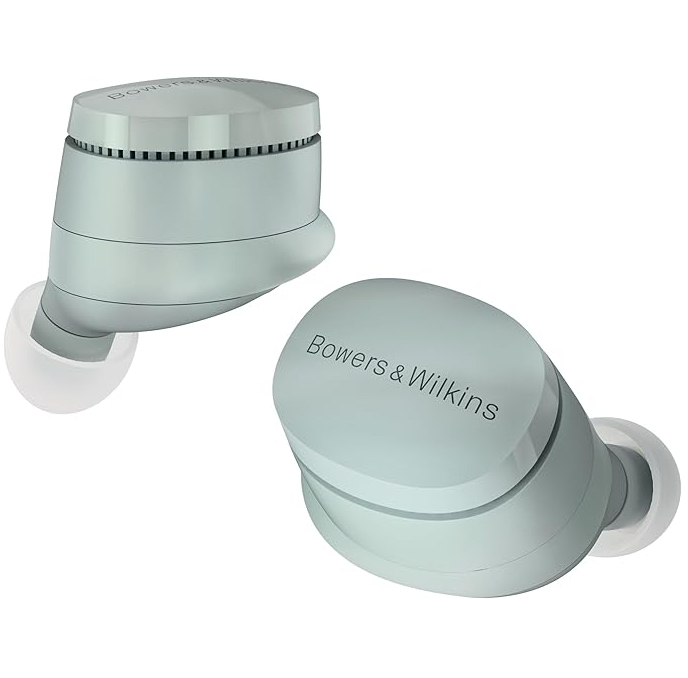
Bluetooth: 5.4
Codec support: AAC, SBC, aptX Adaptive,
Noise cancelling: Yes
Battery Life: 8 hours (single charge with ANC on), 24 hours total (with charging case)
Finishes: x 4 (cloud grey, storm grey, forest green, glacier blue)
Weight: 7g per bud
The B&W Pi6 aren't quite in the same league as the Pi8 in terms of price or performance, but their attractive design and entertaining sound make them a solid option if you can't stretch to their more high-end siblings.
Pros
- Robust, entertaining sound
- Unveil good amounts of detail
- Comfortable, pleasing design
Cons
- Pi8 offer far greater sonic refinement
- Temperamental connectivity
- Fewer features than the Pi8
Bowers & Wilkins has refreshed its wireless earbuds range with the Pi6 and the flagship Pi8, replacing the 2023-released Pi5 S2 and Pi7 S2 respectively. The Bowers & Wilkins Pi8 are edging into what you might call luxury territory, an Award-winning pair of performers that push the boundaries of what a set of buds can be. The Bowers & Wilkins Pi6 are no bargain basement option, but they operate in the very familiar premium realm occupied by some stunning wireless alternatives.
We have tested both sets of buds, assessing them across the key parameters of sound quality, build and features to keep you in the know. Both pairs have their charms, but at differing price points and with their own distinct sonic flavours. So, which is right for you?
Bowers & Wilkins Pi8 vs Pi6: price

As anyone familiar with Bowers & Wilkins products would expect, neither the Pi8 nor the Pi6 are gunning for a spot on our list of the best cheap wireless earbuds. The hi-fi brand's headphones have always sat at the more premium end of the market, and it's no different here.
The flagship Pi8 cost £349 / $399 / AU$599 at full price, making them some of the most expensive wireless earbuds we have tested, so it's understandable if you were looking for a cheaper option.
That's exactly where the Pi6, priced at £219 / $249 / AU$449, come in. They are still very much in the premium wireless earbuds space, mind you, and in the ballpark of several five-star competitors such as the Bose QuietComfort Ultra Earbuds (£219 / $299 / AU$350), Apple AirPods Pro 2 (£230 / $190 / AU$335), and the Sony WF-1000XM5 (currently £219 / $299 / AU$369). Then there's the more recent Technics EAH-AZ100, a five-star pair of contenders which launched at £259 / $299 / AU$499 – a lot of competition, then.
*Winner: Bowers & Wilkins Pi6*
Bowers & Wilkins Pi8 vs Pi6: design and build

On the surface, it’s surprisingly tough to tell the Pi8 and Pi6 apart. Glance at the pic above and, a different colour scheme notwithstanding, it's not entirely clear which of the sets is drawn from premium territory and which is from the even costlier, more luxurious tranche of wireless earbuds.
The latest hi-fi, home cinema and tech news, reviews, buying advice and deals, direct to your inbox.
Both sets weigh the same at 7g per earpiece and sport near-identical dimensions and proportions, although the colour schemes are different depending on the pair you choose – the Pi8 are available in anthracite black, dove white, jade green or midnight blue, while the Pi6 come in cloud grey, storm grey, glacier blue or forest green. We welcome the various chic colour options, not least as Sony, Bose, Apple and Sennheiser tend to stick to more muted tones for their earbud finishes. More importantly, both sets look superb no matter which shade you pick.
There are some further, admittedly rather minor, design differences between the Bowers buds. Both make use primarily of premium plastics for their construction, with B&W doing a fine job of making their buds' smooth, glossy exterior look and feel premium. As you may have noticed above, the slightly more luxurious Pi8 have a band of metal encircling each earpiece to add an extra stylish embellishment, though that is one of the few differences you will find between each set.
Like the flagship Pi8, the Pi6 feature an indented slotted ridge that runs around the outside of each earpiece. Under the ridge are sensors and microphones which are positioned to be free from potential obstructions and thus improve the performance of the mics by ensuring they can’t become blocked. They have practical benefits, but from a pure design perspective, that recessed groove helps give the earpiece a chic touch of class.
Both charging cases are essentially identical in terms of size, shape and looks, which is good news considering we remarked on how nice they feel in the hand in our Pi8 review. They are relatively compact and lightweight at 46g, with a smooth, matte finish and a contrasting colour band encircling each pebble's smooth exterior.
Both sets of buds have IP54 ratings for water and dust resistance, meaning you don’t have to worry if you get particularly sweaty ears or are caught in an unexpected rain shower. From our experience, both sets are amenable to getting your sweat on, though we did find that the Pi6 could get loosened in your ear when really straining through a tricky workout.
Touch controls are also on the menu no matter the Bowers earbuds you select. Both outer surfaces are touch capacitive, so there are no clickable buttons, and while the implementation is decent enough across the models, we'd like more flexible customisation from the Bowers & Wilkins Music app. Being able to configure your earbuds to control volume and switch listening modes at the same time, for instance, or introducing a more sophisticated array of double taps, triple taps and long holds, would make for a more comprehensive, customisable experience.
There's barely any difference in terms of build, but for their slightly more premium look and feel, we're giving the win to the Pi8.
*Winner: Bowers & Wilkins Pi8*
Bowers & Wilkins Pi8 vs Pi6: features

While no longer unique to B&W, the feature that predominantly sets the Pi8 apart from the Pi6 is their case’s ability to wirelessly re-transmit an audio signal. Using the USB-C port on the bottom – either directly or with the provided 3.5mm adaptor – you can hook up the Pi8 case to an audio source and have buds wirelessly receive audio from it. That comes in pretty handy on long-haul flights, especially with support for the aptX Adaptive Bluetooth codec with transmission quality at up to 24-bit/96kHz.
Elsewhere, the Pi6 has a 24-bit DSP, where the Pi8 has a 32-bit DSP. This means the two pairs have different processing qualities that, as you will find below, affect their respective sonic personalities. Both support aptX Adaptive, aptX, AAC and SBC codecs, which is welcome at this price level, although the Pi8 also supports aptX Lossless, the highest-quality Bluetooth codec. As is becoming the norm these days, both models offer Bluetooth Multipoint.
There are a few more discrepancies in the respective feature lists to be aware of, mainly with regard to the gaps left by the Pi6, such as the fact that you get a full five-band equaliser with the Pi8 but a measly two bands when using the Pi6. The Pi8 also has TrueSound mode, which bypasses the EQ entirely and allows for a purer delivery of the audio signal, unharmed by that extra processing, an exclusive feature which hasn't trickled down the line.
Neither set supports spatial audio, something we find to be a surprise given its frequent implementation by rival buds, and neither provides an ear-tip test. The Pi8 offer wireless charging using the compatible case, a feature omitted from the Pi6.
*Winner: Bowers & Wilkins Pi8*
Bowers & Wilkins Pi8 vs Pi6: ANC and call quality
Each set offers active noise cancellation, but there is a difference in their implementation of the sound-blocking functionality. The Pi8's ANC tech is derived from the company's flagship Px8 over-ear headphones, while the Pi6's platform is a tweaked version of the one found in the outgoing Pi7 S2 earbuds.
The Pi8's noise cancelling isn't a million miles off the class leaders, the Bose QuietComfort Ultra Earbuds, but it is more comprehensive and impressive than the performance of the cheaper Pi6. They do "a very good job with the low-frequency rumbles generated by roadworks and traffic," our review reads, even if the ability of the Bose to cut huge swathes of background noise out makes them the ones to beat.
The Pi6's ANC is also capable, though we stress again that it isn't quite up to the standard set by the flagship buds. To quote our review: "our experience with the B&W buds sees most background noises softened, if not entirely eliminated. The screech of a rusty workout bench being adjusted or the clank of weights dropping in a busy gym will penetrate, but more general background noise is handled ably enough."
The Pi6 showcase good call quality during our tests, with voices coming through as clear, expressive and articulate. We did experience some background noise during calls, even in environments where there was little or no environmental sound, although not to the extent that we felt it to be an issue. The Pi8's call quality is roughly similar, though we did find that they struggled on a blustery day when taken out for a spin. At their more elevated price point, we expected a touch more from the B&W flagbearers; a good performance, if not a great one.
*Winner: Tie*
Bowers & Wilkins Pi8 vs Pi6: battery life
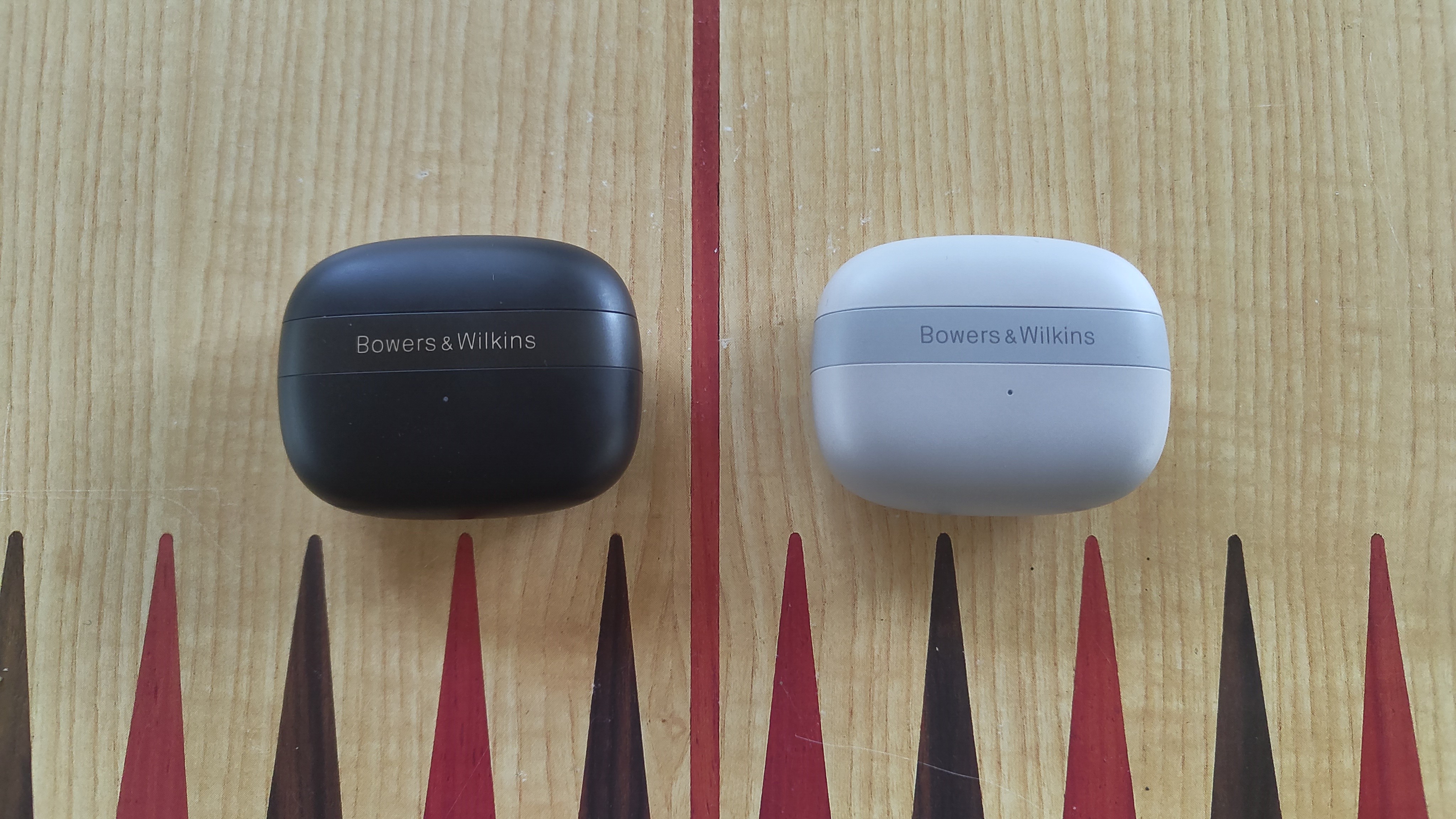
Perhaps the only area where the Pi6 claim a clear advantage over the Pi8 in terms of features is battery life.
The Pi8 offer six-and-a-half hours of battery life from a single charge in the buds with ANC switched on, plus an extra 13.5 hours from the case for a total of 20 hours. From the Pi6, however, there are up to eight in the earbuds (with ANC on) and an additional 16 hours in the case, making for 24 hours in total – about what we expect for premium wireless earbuds. In our experience, Bowers makes good on its claims, and we didn't find discrepancies between stated battery life figures and real-world lifespans during our tests.
While it may seem odd that the more expensive Pi8 have a lower battery life, their increased processing power takes more of a toll on their juice pack. Still, for earbuds that cost as much as they do, falling short of the 24-hour average in the premium market is a shame.
The two models' charging times are identical at two hours, and both can offer two hours of playback from just a 15-minute 'quick' charge. Handy if you're in a hurry and need some juice urgently.
*Winner: Bowers & Wilkins Pi6*
Bowers & Wilkins Pi8 vs Pi6: sound quality
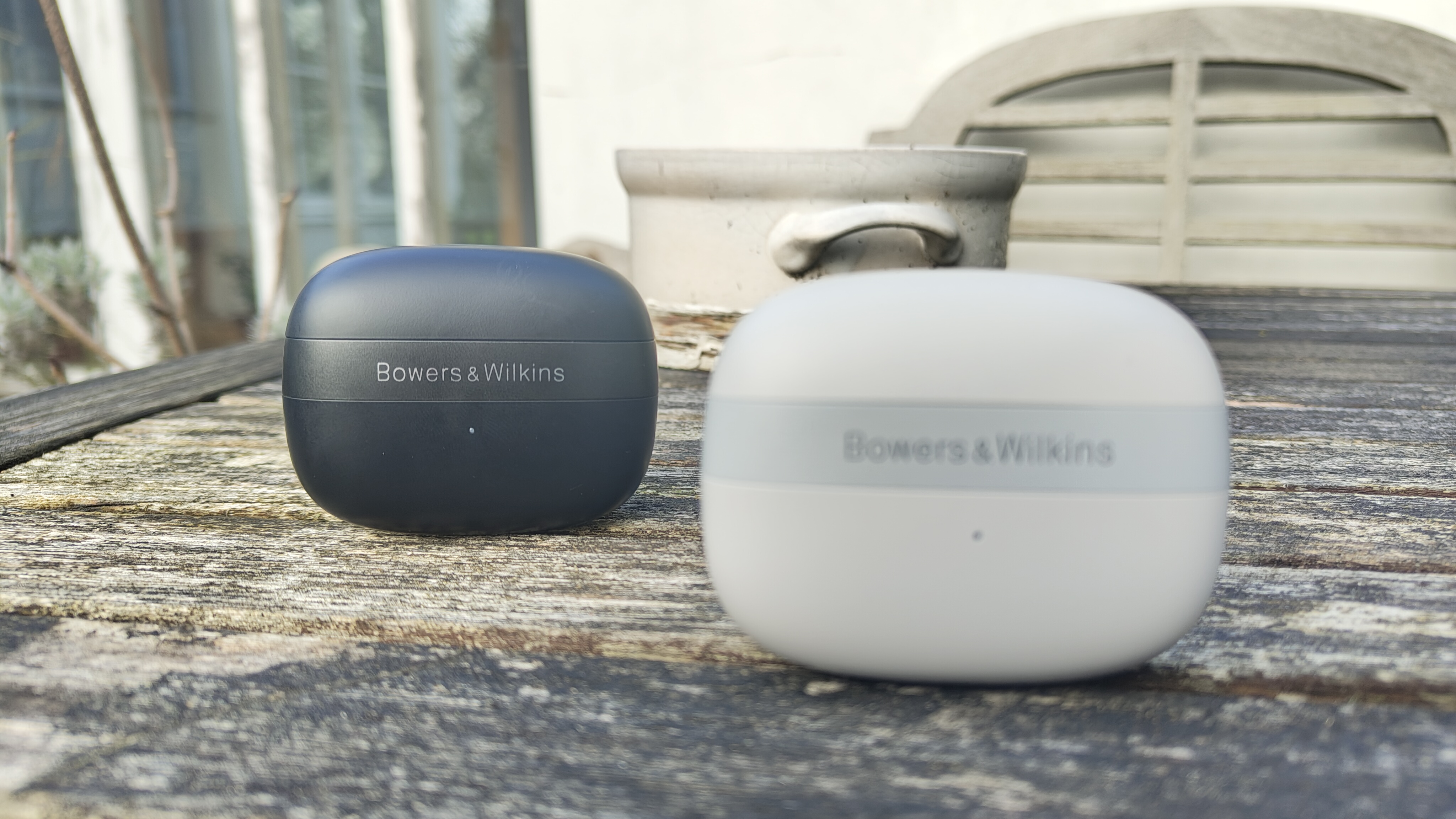
They may look similar, but there are key design differences housed within our respective competitors' innards. While the drivers inside both pairs of buds are the same size (12mm), the materials used for each differ. The Pi8 deploy a carbon cone, the same material used in the driver of the five-star Px8 wireless headphones, whereas the Pi6's drivers are made of bio-cellulose and derive from the larger units found in the Px7 S2E over-ears, a difference which contributes to some rather distinct pair of sonic approaches.
The Pi8 are the pinnacle of in-ear Bowers sound. Our five-star review noted that their "wonderfully sophisticated, balanced and transparent sound delivers a level of insight that’s rare in wireless earbuds," and that overall it is "a really sophisticated, polished performance that’s overflowing with detail". It isn't often our reviews team hears earbuds more insightful than the Award-winning Sony WF-1000XM5, but they concluded that the Pi8 are "clearly the best wireless earbuds we’ve heard from the brand and real contenders for class-leading status."
There's fun to be had here, too. Naturally, the flagship Bowers buds feel right at home with texturally nuanced pieces, but they are just as happy rocking out with the likes of Royal Blood or Chase & Status as they are picking apart a slice of Radiohead or Massive Attack. The pace and precision of the buds' delivery is, when called for, deeply impressive, and they dispatch Chase & Status's This Moment with detail, authority and power.
While the Pi8 go big on clarity, nuance and unbelievable levels of detail, the Pi6 are a different kettle of cod. Robust and powerful, this is a pair of good time buds built for entertainment. That character lends itself far more readily to certain genres than others – rock, heavy metal and hip-hop are well served by the Pi6's meaty, full-bodied style, coming to life as the Bowers buds really dig into the textures of crunchy guitars and screeching vocals to invigorating effect.
They are strong across the board, too, though note again that this is not the open and spacious performance found with the Pi8 or even the price-comparable Technics EAH-AZ100. This is instead a far denser, more assertive affair. They are competent across the board, however, unveiling rhythmic patterns ably and bringing out the jaunty strings of Hans Zimmer's Pirates of the Caribbean soundtrack with real insight, all while providing plenty of hearty, well-controlled bass into the mix. The Pi8 are, naturally, better performers across the board, but the Pi6 have a chosen style and, by most measures, carry it off very well.
*Winner: Bowers & Wilkins Pi8*
Bowers & Wilkins Pi8 vs Pi6: verdict
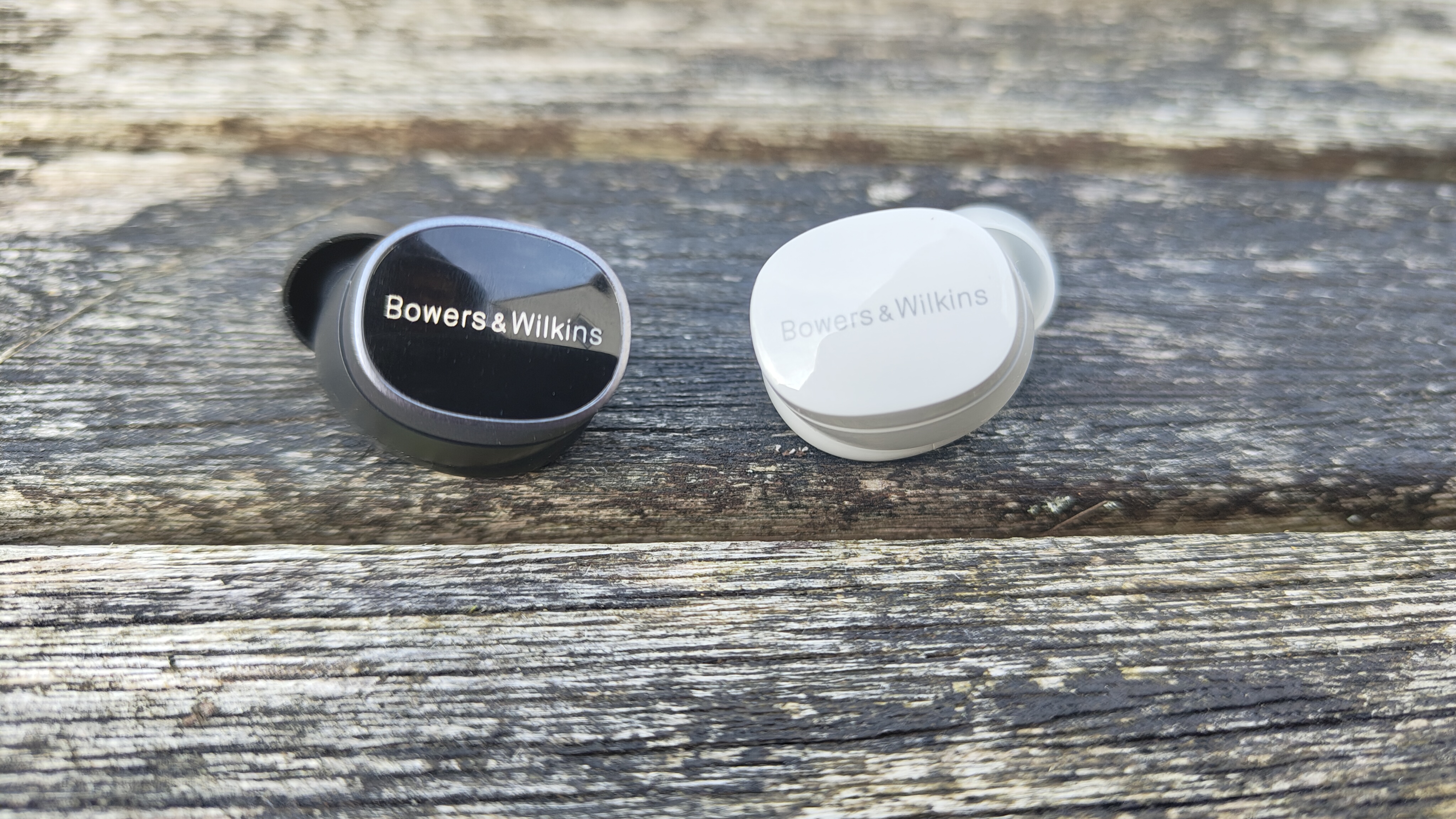
Don't think of the Pi6 as a sort of scaled-down version of the Pi8. The Pi6 are a distinct pair of earbuds in their own right, and while they don't keep up with their more luxurious siblings in the features department, they also pack a sound that's distinct from the personality offered by the Pi8. If you're planning on saving a bit of cash by opting for the Pi6 over the Pi8, that's a bit of a red herring – good as the Pi6 are, their sonic flavour is much more about punch and power than it is to do with clarity and insight.
If you want a 'money no object' pair of wireless earbuds, we wholeheartedly recommend the costlier Pi8 flagships – their current What Hi-Fi? Award attests to that. If cash is a consideration, the Pi6 are fine four-star alternatives, though we suggest that you familiarise yourself with their many five-star rivals – the Sony WF-1000XM5, Technics EAH-AZ100 and the Bose QuietComfort Earbuds Ultra – before slinging a pair in your basket.
MORE:
Decided on the Pi8? See how they compare: Bowers & Wilkins Pi8 vs Bose QuietComfort Ultra Earbuds
Best AirPods alternatives: choice pairs reviewed by our experts
I flew across the world and this rarely-seen wireless earbuds feature was an unexpected saviour
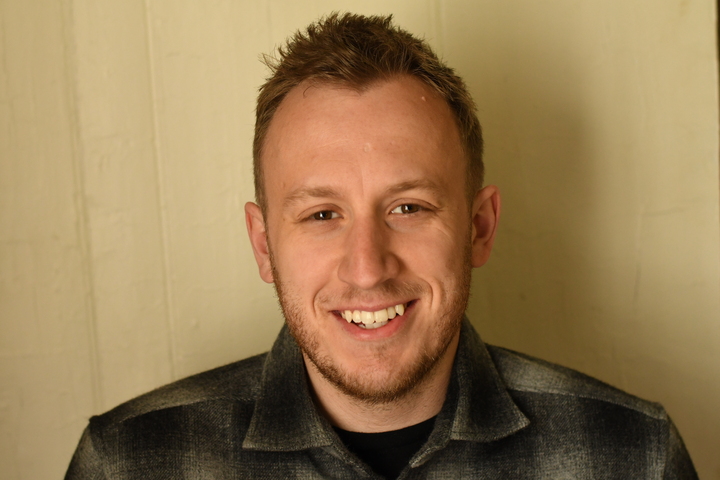
Harry McKerrell is a senior staff writer at What Hi-Fi?. During his time at the publication, he has written countless news stories alongside features, advice and reviews of products ranging from floorstanding speakers and music streamers to over-ear headphones, wireless earbuds and portable DACs. He has covered launches from hi-fi and consumer tech brands, and major industry events including IFA, High End Munich and, of course, the Bristol Hi-Fi Show. When not at work he can be found playing hockey, practising the piano or trying to pet strangers' dogs.
- Tom Wiggins
- Becky RobertsFreelance contributor
